Fireflies
 n earlier times when much of the population lived on farms, fireflies
were a common part of American rural life.
A field full of glowing
fireflies is still an amazing part of nature that is well worth seeing.
n earlier times when much of the population lived on farms, fireflies
were a common part of American rural life.
A field full of glowing
fireflies is still an amazing part of nature that is well worth seeing.
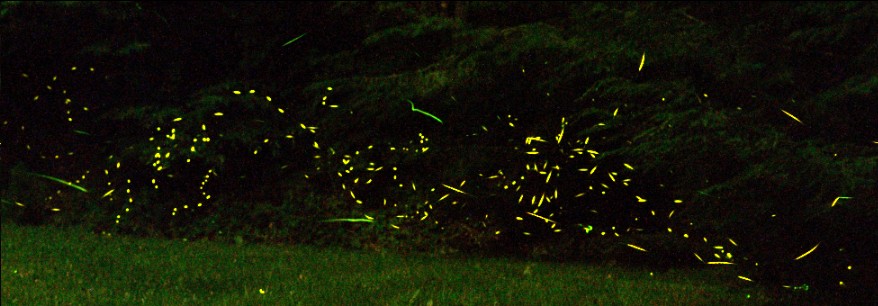 Fig. 1 Yellow and green fireflies near a row of hemlock trees
(D7000, 292 second exposure, 35 mm f/1.8 lens, f/4, ISO 100,
6/17/2012, 1:17 am).
Fig. 1 Yellow and green fireflies near a row of hemlock trees
(D7000, 292 second exposure, 35 mm f/1.8 lens, f/4, ISO 100,
6/17/2012, 1:17 am).
In this article I will discuss some little-known facts about fireflies, including new details about firefly mini-flashes and firefly synchronization, and tips on photographing fireflies.
Wavelengths of firefly light
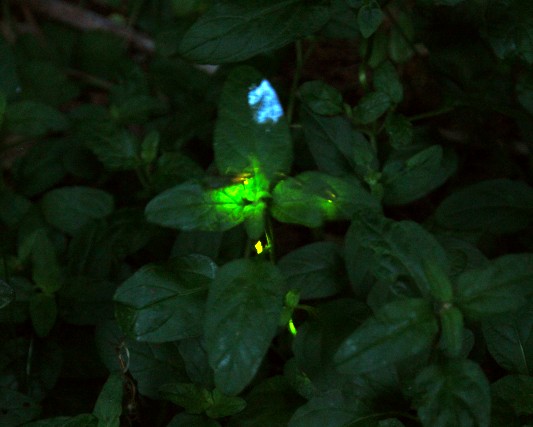 Fig. 2 Firefly and bioluminescent fungus on a leaf
(30 sec, VR 18–105 mm f/3.5–5.6 lens at 44 mm,
f/4.8, ISO 100, 6/12/2012, 9:25pm).
Fig. 2 Firefly and bioluminescent fungus on a leaf
(30 sec, VR 18–105 mm f/3.5–5.6 lens at 44 mm,
f/4.8, ISO 100, 6/12/2012, 9:25pm).
Fireflies emit light in a broad band centered around 562 nanometers [1,2]. In a camera, this shows up in the green and red channels at a ratio of about 1.7:1. The blue channel is dark, and infrared cameras also show no signal. If the camera is over-exposed, firefly flashes appear yellow. However, their true color is a yellowish-green.
H. H. Seliger and colleagues [6] discovered that getting Jamaican fireflies drunk by exposing them to ethyl acetate vapor caused them to emit a strong glow for two to five minutes, long enough to measure their emission spectra. (The beetles gradually recovered afterward, but had difficulty flashing for a while.) They found that different species emit light clustered at two major peaks, 552 and 585 nanometers.
Later, they found that American fireflies are even better, with their dorsal
light organs emitting light in one of three wavelengths instead of two, peaking
at 550.1, 556.8, and 562.4 nanometers. They called these ‘Lime’,
‘Lemon-lime’, and ‘Lemon’ fireflies. Each species
had a slightly different wavelength peak, ranging from 547 (green) to 574 (yellow),
with rare ones emitting light up to 594 nm [8]. In some species, there can also
be wide variations in wavelength among different individuals.
Firefly light is emitted over a broad band (FWHM = 64 to 77 nm), about three times
wider than the bandwidth of a modern LED. The
corresponding colors are shown at right
(from here).
 Firefly color swatch
Firefly color swatch
Some fireflies have two light-emitting organs. In addition to the normal dorsal one, they also have a more ventral one that emits a longer wavelength of light than the dorsal one, usually between 575 and 585 nanometers, sometimes almost orange in color.
Seliger proposed that dark-active fireflies generally emit green bioluminescence and dusk-active species emit yellow, making them adaptive to different illumination conditions [7]. I didn't observe any difference in the proportion of green to yellow between dusk and 3:00 am in my area. If anything, I observed a greater percentage of green at 9 pm than at 1 am. What I did observe is that some years fireflies are most active between 12:00 and 2:30, while other years they are most active at dusk between 8:30 and 9:30. If the early/late cycle is out of phase for the two species, it could account for Seliger's observation.
The wavelength is influenced by the composition of the protein luciferase, which catalyzes the reaction of luciferin, the light-emitting molecule, with oxygen from the atmosphere. This creates an organic peroxide which then decomposes, leaving the luciferin in an energized state. The luciferin then releases its energy as light. Biologists have created improved forms of luciferase that produce more light, and new forms that produce red light. In nature, the color is affected by pH. At lower, more acidic pH, luciferase emission is shifted to the orange.
Many other species produce bioluminescence using luciferase or other enzymes. The railroad worm Phrixothrix has a form of luciferase that contains an additional amino acid residue (Arg353) that causes it to emit a red bioluminescence color naturally [3]. Many other species, including fungi, bacteria, molluscs, and other beetles produce bioluminescence [4]. The photo above of a firefly on a leaf (Fig. 2) also captured an unidentified blue photoluminescence, possibly a luminescent fungus.
According to Viviani [5], bioluminescence arose at least 30 independent times during evolution. Among terrestrial organisms, at least 8 different bioluminescent systems evolved independently.
Flashing Pattern
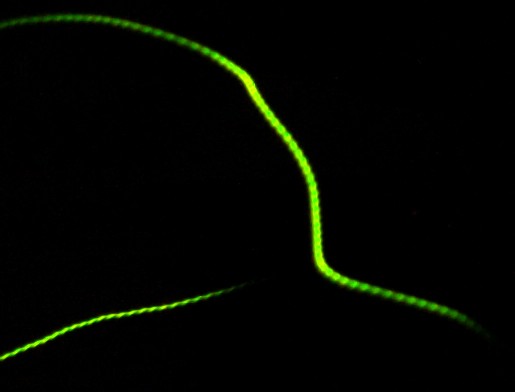 Fig. 3 Two long-duration firefly flashes showing the sinusoidal
variation (mini-flashes) in intensity over time. Each flash lasted for
about 1 to 2 seconds and consisted of over 70 mini-flashes.
(60 sec, 35 mm f/1.8 lens, f/4, ISO 100, 6/17/2012, 1:58 am).
Fig. 3 Two long-duration firefly flashes showing the sinusoidal
variation (mini-flashes) in intensity over time. Each flash lasted for
about 1 to 2 seconds and consisted of over 70 mini-flashes.
(60 sec, 35 mm f/1.8 lens, f/4, ISO 100, 6/17/2012, 1:58 am).
In the air, a firefly can emit a continuous flash for up to 3 seconds, or it can emit its light as a series of 3–10 pulses. These pulses are modulated in a sinusoidal pattern of mini-flashes (Fig. 3). These mini-flashes seem to be caused by variations in the flight path caused by its wings beating.
Fig. 4 shows a densitometric tracing of the intensity from a single, long firefly flash. Despite the fluctuations in intensity, the ratio of green to red remains constant, indicating that the firefly is using a single light-generating system, and varying the intensity, not switching between two different colors.
Fireflies can also emit a single, bright flash like a flashbulb. This mode seems to predominate in some locations, especially earlier in the season.
On the ground, a firefly can flash for much longer periods, up to several minutes. One possible explanation for these different types of flashes is that generating light while flying takes a lot of energy that is needed for flying. Another possibility is that on the ground there is less concern with colliding with objects while blinded by their own light. The light is emitted from their abdomen, and their back contains a reflector that directs light toward the ground.
Unlike other insects, fireflies fly in an almost vertical position, in a helicopter-like manner. This presumably makes it easier for them to hover.
Synchronization
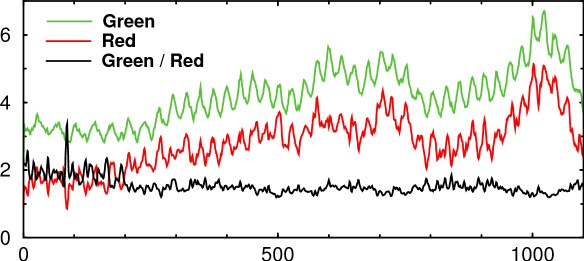 Fig. 4 Time dependence of a flash from a firefly. This single flash
consists of over forty mini-flashes which are too rapid to be observable by the
naked eye.
Fig. 4 Time dependence of a flash from a firefly. This single flash
consists of over forty mini-flashes which are too rapid to be observable by the
naked eye.
Most people think that only fireflies in southeast Asia flash in synchronization. But some species of American fireflies (notably Photinus carolinus) are capable of synchronizing their flashes, indicating that fireflies can sense each other's presence. This synchronized flashing only occurs when the fireflies are at a high enough density and are not disturbed by outside lighting. In the eastern USA, groups of fireflies flash synchronously in the following typical pattern:
- Dark for 4–5 seconds.
- One firefly, acting as the leader, flashes. This is the signal for the group to start flashing.
- Within about one second, the entire group, which may consist of as few as five or ten fireflies, begins to flash in a synchronous pattern. Each one flashes three or four times, about once per second. Fireflies more than a few meters away from the group do not participate, and continue to flash randomly.
- After a few seconds, the flashing stops.
The synchronization is not perfect—more like an out-of-tune jazz band—but the same pattern is repeated many times until the group drifts apart due to a wind gust, disruption by external light, or some other factor Sometimes it's possible to trigger a burst of firefly flashes by flashing a small, dim LED light on and off (not a flashlight, which would disrupt them). Synchronization doesn't always occur. In my area it was maximal around two in the morning. At other times, the flashing appeared random.
See the movie below showing synchronized fireflies photographed in the eastern USA south of Pittsburgh.
How does a firefly see where it is going? Why aren't they blinded by their own light? The answer is not known. Perhaps the signals from their eyes are blocked while they are flashing. In many hours of observation I have never observed two fireflies colliding with each other or a firefly smashing into a stationary object in the dark. (I find this fairly impressive, as I have done this myself on several occasions). However, one one occasion I observed a firefly that had been caught in a spider web. It was a tragic sight, and the picture is too unpleasant to post on the Internet. Life is tough if you're a bug.
There are at least two different types of fireflies
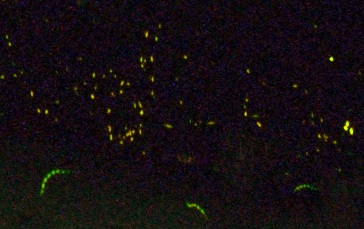 Fig. 5 Green and yellow fireflies.
(120 sec, 18–300mm f/3.5–5.6 G VR lens at f/3.5, ISO 400,
6/13/2015, 1:29am).
Fig. 5 Green and yellow fireflies.
(120 sec, 18–300mm f/3.5–5.6 G VR lens at f/3.5, ISO 400,
6/13/2015, 1:29am).
From the photo at the top of the page, there appear to be at least two distinctly different populations of fireflies: yellow and green. But photographs can be deceiving: it could be that the camera is merely more sensitive to green than red, which could make the fainter ones appear green. Visual observing is also tricky, because the dark-adapted eye is insensitive to color.
After observing them close up (which makes them bright enough to observe their color), however, it is clear that green fireflies really exist. Although yellow and green fireflies are different species, they flash together. From a distance, the green ones appear bluish-white, but up close the green color is unmistakable. Their behavior is also different: green ones flash for a much longer time than yellow ones, and only once instead of in a sequence of five or six brief flashes. The onset of the flash is more gradual than the flashbulb-like pattern of the yellow ones. The existence of two species in the same area with different flash color was also reported by Seliger and colleagues [6,7].
Yellow ‘flashbulb’ fireflies appear in early June, followed by yellow
multiple-flash fireflies and green long-flash fireflies. By late June, the yellow
ones are less common, while green fireflies continue flashing until early July.
Many of these remain far overhead near the treetops and appear bluish-white.
The image at right (Fig. 5) shows three green fireflies in front of a much
larger population of yellow fireflies. The image below (Fig. 6) shows the typical
long flash of green fireflies and an unusual green multiple-flash firefly.
 Fig. 6 Two flashing patterns of green fireflies near the end of the season.
Most yellow fireflies have disappeared by this date.
(18–300mm f/3.5–5.6 G VR lens at f/3.5, ISO 400,
6/23/2015. Left: 10:06pm, 24 sec; Right: 9:37pm, 23 sec).
Fig. 6 Two flashing patterns of green fireflies near the end of the season.
Most yellow fireflies have disappeared by this date.
(18–300mm f/3.5–5.6 G VR lens at f/3.5, ISO 400,
6/23/2015. Left: 10:06pm, 24 sec; Right: 9:37pm, 23 sec).
How many watts are emitted in a firefly flash?
According to William Woods and colleagues [9], a Photinus firefly uses 51.2 microwatts when flashing and 37.1 microwatts when resting. This means that 14.1 microwatts are used for flashing. If the firefly flashes 1/10 of the time, this would imply that a single flash uses about 141 microwatts. Light generation in fireflies is almost 100% efficient, so the light emitted would also be small fraction of a milliwatt, although some of this is absorbed by the light organ. Flashing takes only 2/3 as much energy as walking. The biggest energy expenditure is used in flying: 722 microwatts, or 51.3 times as much energy as needed for flashing.
From these numbers, we can calculate that you would need 709,220 fireflies to produce as much light as a 100-watt bulb. However, since only 5% of the energy produced by an incandescent bulb is in the visible range, that number drops to 35,461 fireflies—in fact, even fewer than this are really needed, because our eye is more sensitive to green light than to other colors. (This is not taking into account the fact that fireflies will block each other's light.)
Courtship signaling
After the male firefly in the air signals, the female on the ground responds with a single, precisely timed flash. The signal and response are coded for firefly species. To test whether ground location alone was a signal, I placed a large mirror on the ground facing up to reflect their pulses, but it was ignored.
Photuris is a larger species of firefly that mimics the flashing of female Photinus in order to hunt and consume males. Woods et al. published a photo of a firefly after being eaten by a Photuris. It is a pretty awful sight.
Photographing fireflies
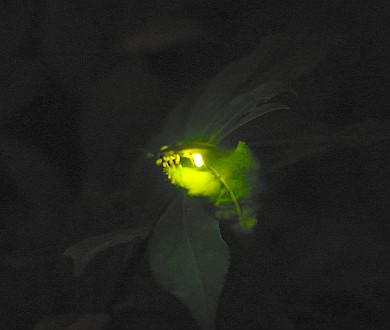 Fig. 7 Firefly on a leaf. The firefly is facing left, and its luminescent
abdominal region is pointed down.
(19 sec, 35 mm f/1.8 lens, f/2.8, ISO 400, 6/15/2012, 10:37pm).
Fig. 7 Firefly on a leaf. The firefly is facing left, and its luminescent
abdominal region is pointed down.
(19 sec, 35 mm f/1.8 lens, f/2.8, ISO 400, 6/15/2012, 10:37pm).
Fireflies are only active for a few weeks in late May to mid-June (although they can occasionally be seen as late as mid-July). The ideal location is a grassy area bordering on a forest. Although fireflies begin flashing at dusk and continue until about 4:30, the greatest number in our area are active between 1 and 3 AM, when it is maximally dark. Few fireflies are out during a full moon or when neighborhood lights or light pollution are visible. The best time is a clear moonless night when the weather is hot and humid.
When photographing fireflies, the environment must be very dark to avoid washing the firefly light out with background light. Green light from mercury-vapor lamps and red light from sodium streetlights are the biggest culprits. In one of my images, I accidentally pointed the camera at the house. Even though I had turned off every light in the house, the camera showed a bright red glow blasting from every door and window, caused by a power strip somewhere inside the house that contained a small neon light. In general, if you can still see the ground after your eyes are dark-adapted, it is not dark enough.
It's also important not to over-expose the image. If this happens, the green channel can become saturated, while the red channel continues to increase. This changes the signal from green to yellow. An example is shown in Fig. 8. In this image, as this firefly gets closer to the camera, it appears to change from green to yellow. However, this is only an artifact caused by over-exposure. It's important to use low ISO values and careful image processing to avoid creating an inaccurate color.
The following conditions are a good starting point for photographing fireflies:
-
Time exposure 30 sec to 10 min. If you're using a digital camera, the longer
you expose, the noisier the image will become. Some cameras have a long-exposure
noise reduction feature that automatically takes a dark frame after each shot.
This subtracts out the fixed-pattern noise, greatly improving the image. However,
this means you may have to wait up to ten minutes before you can take the next
shot. The fireflies seem somehow to sense this and will flash, do back flips,
and perform all kinds of other tricks because they know you're unable to photograph
them. It's often better to take a series of separate dark frames, average them,
and subtract them manually the next day on the computer. Since time and high
temperatures increase DSLR noise, the dark frames have to be matched to the
time and temperature of the exposures.
-
A fast lens (f/2 or faster). It should be stopped down to at least f/4 to
get a wide depth of focus. On one occasion I used an AF-S DX Nikkor 18–300mm
f/3.5–5.6G ED VR lens, and the images were much noisier.
-
Obviously, make sure the flash is disabled on the camera. Keep autofocus off
as well. Some cameras automatically turn on a secondary light that is used for
autofocusing. This would disrupt the fireflies, and probably destroy your
dark-adaptation as well.
- ISO 100–400. To minimize the noise in the image, keep the ISO low. Even though this makes the image appear darker, gamma-enhancing it on the computer usually produces a better result than allowing the camera to amplify the signal. In extreme cases, software binning can brighten the image at the expense of resolution. Simply increasing the contrast usually produces unsatisfactory results. I use Imal, which contains special algorithms for gamma enhancement and software binning, but other software packages should also work. As mentioned above, it's critical not to over-expose the image to avoid false color changes. Most of the images on this page were taken at ISO 100 to ensure that the correct colors were recorded.
 Fig. 8 This time-exposure image of a green firefly was over-exposed,
making it appear to change from green to yellow.
Fig. 8 This time-exposure image of a green firefly was over-exposed,
making it appear to change from green to yellow.
Because it's too dark for autofocusing, you must set the camera to manual mode. Unfortunately, it's very difficult to focus on a firefly through the viewfinder. One way to focus is to place a red LED light on the ground near the location of the fireflies, then focus on the light. You could also set up a series of LEDs on a long wire to focus at a variety of distances. Another way is to use a laser pointer. Live View also works if there are a lot of fireflies.
Taking movies of fireflies
 Fig. 9 Movie of synchronized fireflies. These fireflies kept up a pretty good
rhythm until the end. The camera is not sensitive enough to capture the true
appearance—in reality there are glowing reflections everywhere, and
other fireflies, not synchronized to these, are off camera. Click on image
to view movie.
Fig. 9 Movie of synchronized fireflies. These fireflies kept up a pretty good
rhythm until the end. The camera is not sensitive enough to capture the true
appearance—in reality there are glowing reflections everywhere, and
other fireflies, not synchronized to these, are off camera. Click on image
to view movie.
Because exposures in a movie are only 1/24 or 1/30 second, it's even more important to use a fast lens when taking movies. For wide-angle shots, as in Fig. 9, I used a 35 mm f/1.8 lens; for close-ups, a 50 mm f/1.2 lens was better. For many cameras (including Nikons) the ISO setting is ignored in movies, but the EV setting isn't. So leave the ISO at 100 to 400 and set the EV to its maximum.
It's usually necessary to filter a firefly movie. This command brightens
it and reduces the MPEG background:
ffmpeg -i DSC_6932.MOV -vf lutyuv=y=val*5,lutyuv=y=gammaval'(1.4)' a.avi
See here for a list of other ffmpeg commands.
The flashing rate changes markedly from day to day as the temperature changes. At 71°F they flashed 2.2 times a second, but the next day at 79°F they flashed at 3.3 times a second. When it became windy they also started flashing more rapidly. As the season progresses, more fireflies are crawling on the ground, where the rate of flashing is much lower, as shown in the movie below. Firefly larvae and glowworms do not flash at all, but glow continuously for a period of several minutes. Firefly larvae emit the same color as adults, but they are much dimmer.
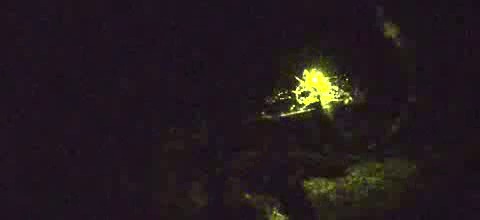 Fig. 10 Movie of a single firefly on the ground. The camera position was
fixed. This firefly continued to flash for over 30 minutes as it moved
around in the weeds. Click on image to view movie.
Fig. 10 Movie of a single firefly on the ground. The camera position was
fixed. This firefly continued to flash for over 30 minutes as it moved
around in the weeds. Click on image to view movie.
Conclusion
A photograph doesn't capture the true ambiance of a firefly-lit scene. In reality, you are surrounded by flashing lights in all three dimensions. They are completely silent. Each flash illuminates a small patch of ground with an eerie glow. Sometimes the ground appears to be glowing with dozens of fireflies that have landed, with dozens more hovering a foot or two above it. Dazzling firefly displays were once a routine event in rural parts of the eastern United States. They're gradually becoming more difficult to observe because of light pollution. Everyone should witness this amazing phenomenon of nature at least once in their lifetime.
It's been said that if you swallow a firefly it will make you a little bit brighter. But it's only a myth.
References
[1] Seliger & McElroy (1960). Spectral emission and quantum yield of
firefly bioluminescence. Arch Biochem Biophys 88: 136–141
[2] Shapiro et al 2009
[3] The effective role of positive charge saturation in bioluminescence
color and thermostability of firefly luciferase
Bagher Said Alipour , Saman Hosseinkhani , Sussan K. Ardestani and Ali Moradi
Photochem. Photobiol. Sci., 2009,8, 847–855
[4] Viviani http://www.photobiology.info/Viviani.html
[5] Viviani, V. R. (2002) The origin, diversity and structure function relationships of insect luciferases. CMLS 59: 1833–1850
[6] Seliger, H.H. (1964) The spectral distribution of firefly light. J. Gen Physiol.
48, 95–104.
[7] Lall A.B., Seliger, H.H., Biggley, W.H., Lloyd, J.E. (1980). Ecology of
colors of firefly bioluminescence. Science 210(4469), 560–562.
[8] Biggley, W.H., Lloyd, J.E., Seliger, H.H. (1967). The spectral distribution of
firefly light. II. J. Gen. Physiol. 50, 1681–1692.
[9] Woods, W.A. Jr, Hendrickson, H., Mason, J., Lewis, S.M. (2007).
Energy and predation costs of firefly courtship signals.
Am Nat. 170(5):702–708.
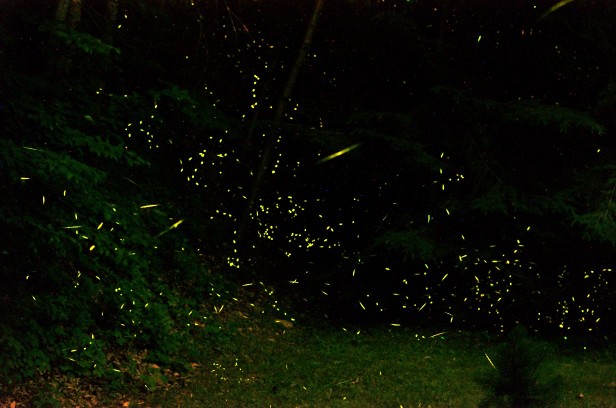 Fig. 11 These fireflies were flashing
synchronously at a rate of about one flash per second.
(665 sec, 35 mm f/1.8 lens, f/3.2, ISO 100, 6/16/2012, 2:22 am).
Fig. 11 These fireflies were flashing
synchronously at a rate of about one flash per second.
(665 sec, 35 mm f/1.8 lens, f/3.2, ISO 100, 6/16/2012, 2:22 am).
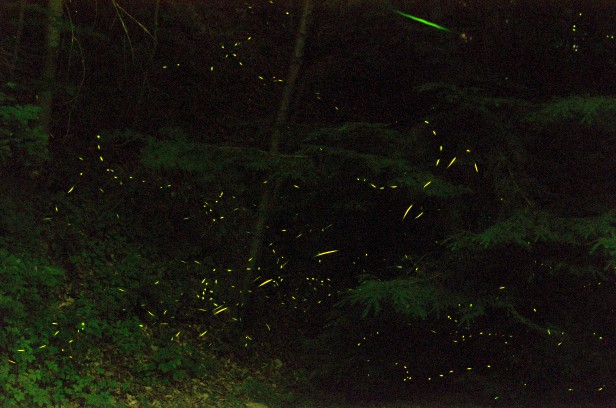 Fig. 12 Fireflies at the edge of a forest.
(465 sec, 35 mm f/1.8 lens, f/4, ISO 100, 12:37 am).
Fig. 12 Fireflies at the edge of a forest.
(465 sec, 35 mm f/1.8 lens, f/4, ISO 100, 12:37 am).
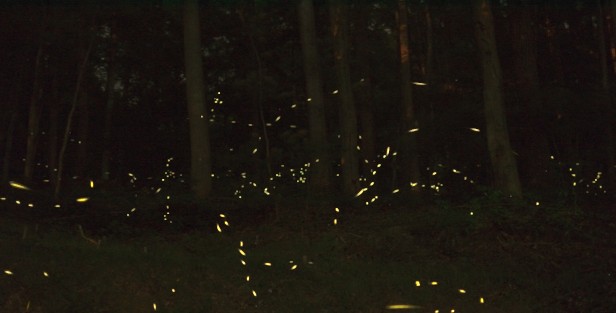 Fig. 13 The best location for fireflies is a grassy clearing
in the middle of a forest. However, getting there at one in the morning is not
so easy. Almost all the fireflies in this scene appeared yellow.
(D7000, 151 sec, 35 mm f/1.8 lens, f/1.8, ISO 100, Jun 12 2018, 1:21 am).
Fig. 13 The best location for fireflies is a grassy clearing
in the middle of a forest. However, getting there at one in the morning is not
so easy. Almost all the fireflies in this scene appeared yellow.
(D7000, 151 sec, 35 mm f/1.8 lens, f/1.8, ISO 100, Jun 12 2018, 1:21 am).
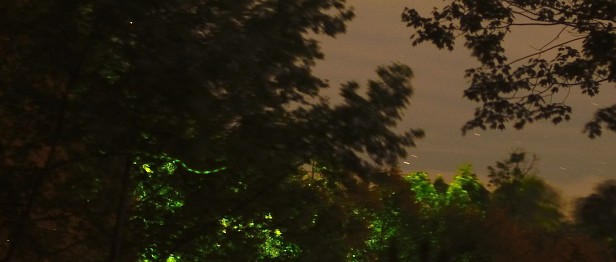 Fig. 14 This image illustrates several challenges in photographing fireflies.
Most of the fireflies are too far away and appear as tiny yellow dots.
A mercury vapor lamp was imparting a strong green color to the trees that obscured
most of the green fireflies. Wind was blowing the trees, making them appear blurry.
The long exposure turned the stars into short star trails, and the sky appeared
brown due to distant artificial light.
(D7000, 40 sec, 35 mm f/1.8 lens, f/1.8, ISO 100, Jun 12 2018, 12:45 am).
Fig. 14 This image illustrates several challenges in photographing fireflies.
Most of the fireflies are too far away and appear as tiny yellow dots.
A mercury vapor lamp was imparting a strong green color to the trees that obscured
most of the green fireflies. Wind was blowing the trees, making them appear blurry.
The long exposure turned the stars into short star trails, and the sky appeared
brown due to distant artificial light.
(D7000, 40 sec, 35 mm f/1.8 lens, f/1.8, ISO 100, Jun 12 2018, 12:45 am).
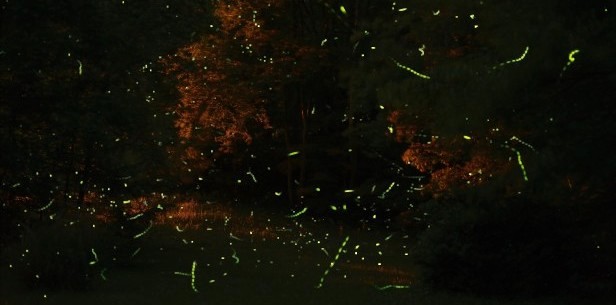 Fig. 15 Low-pressure sodium streetlights impart an eerie red background to the
scene.
(D7000, 298 sec, 35 mm f/1.8 lens, f/1.8, ISO 100, Jun 11 2018, 11:58 pm).
Fig. 15 Low-pressure sodium streetlights impart an eerie red background to the
scene.
(D7000, 298 sec, 35 mm f/1.8 lens, f/1.8, ISO 100, Jun 11 2018, 11:58 pm).
